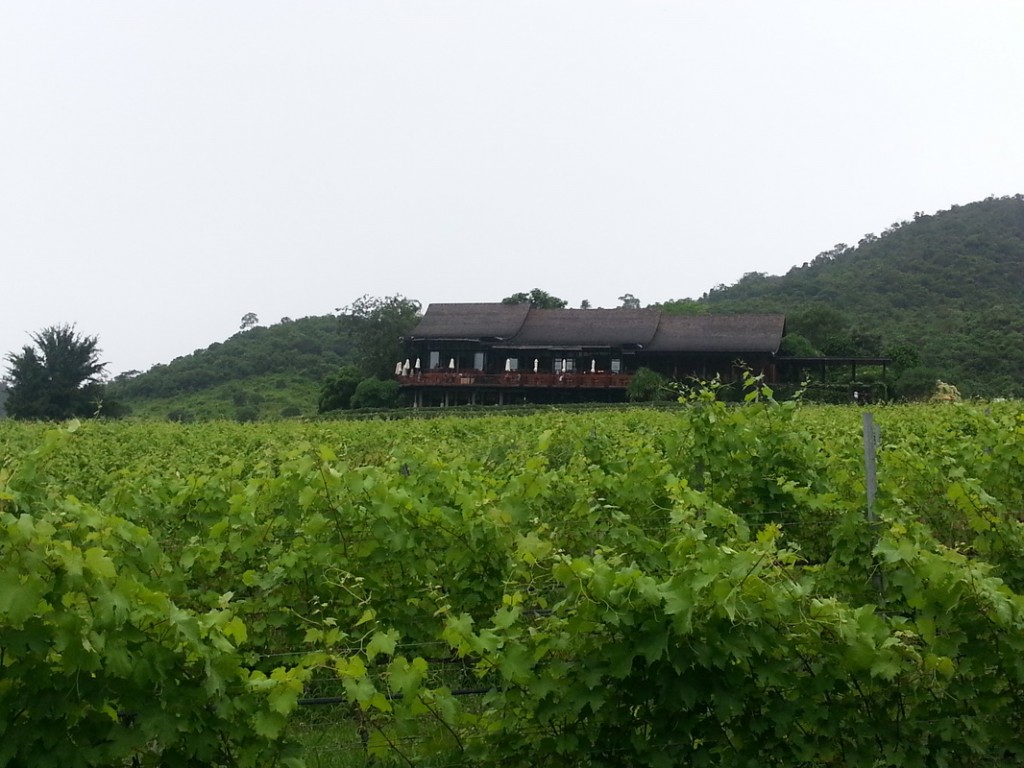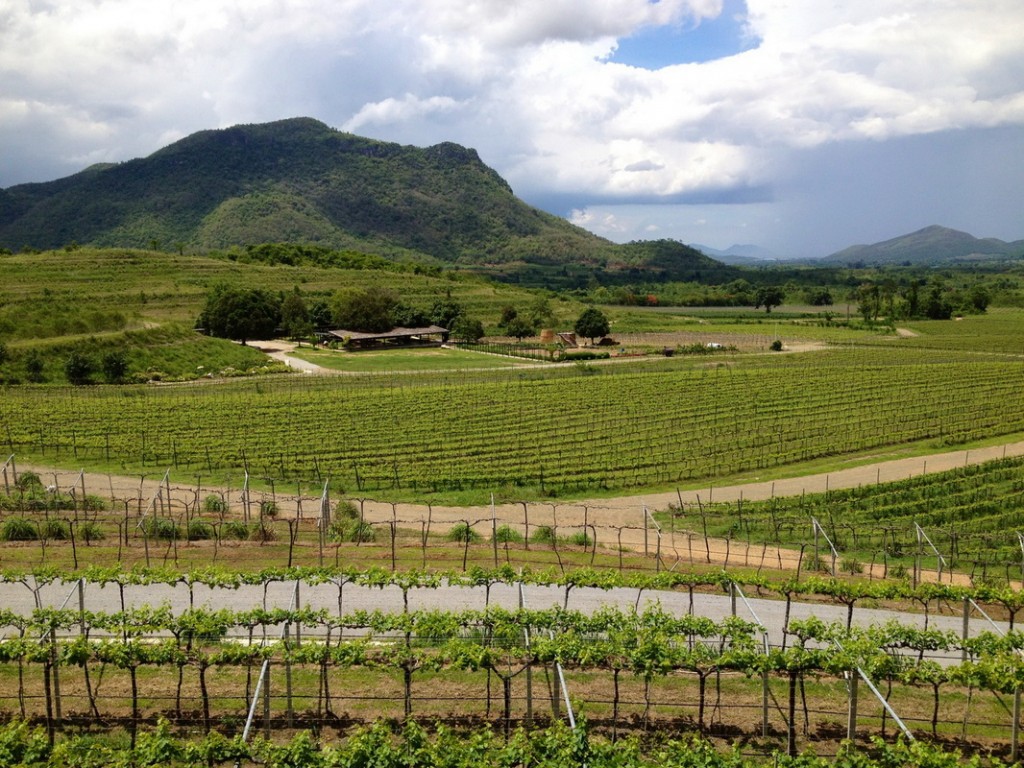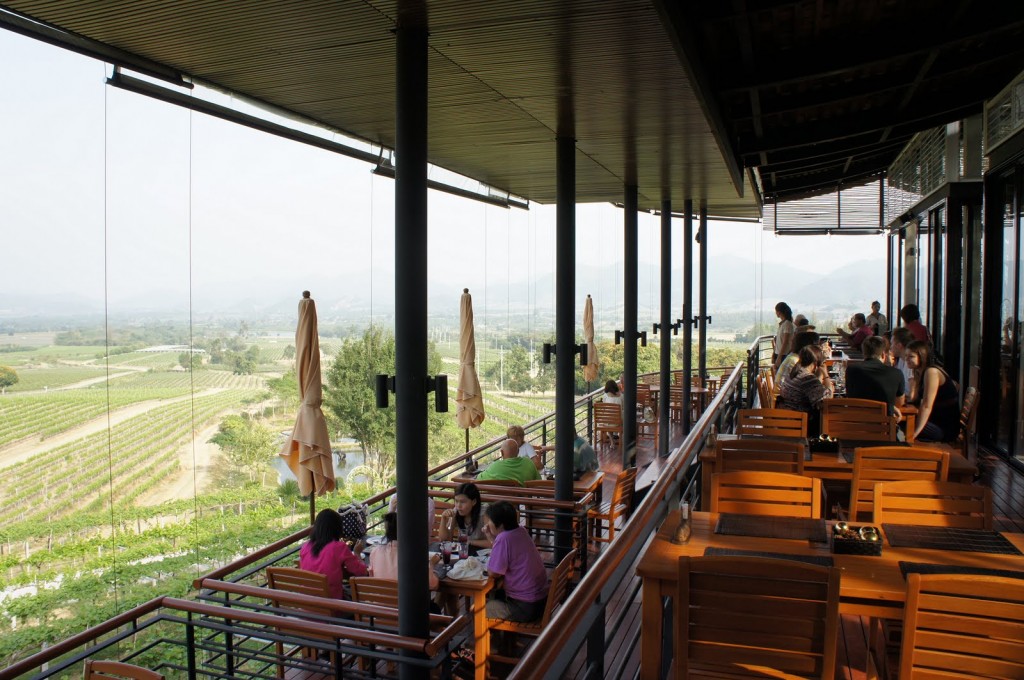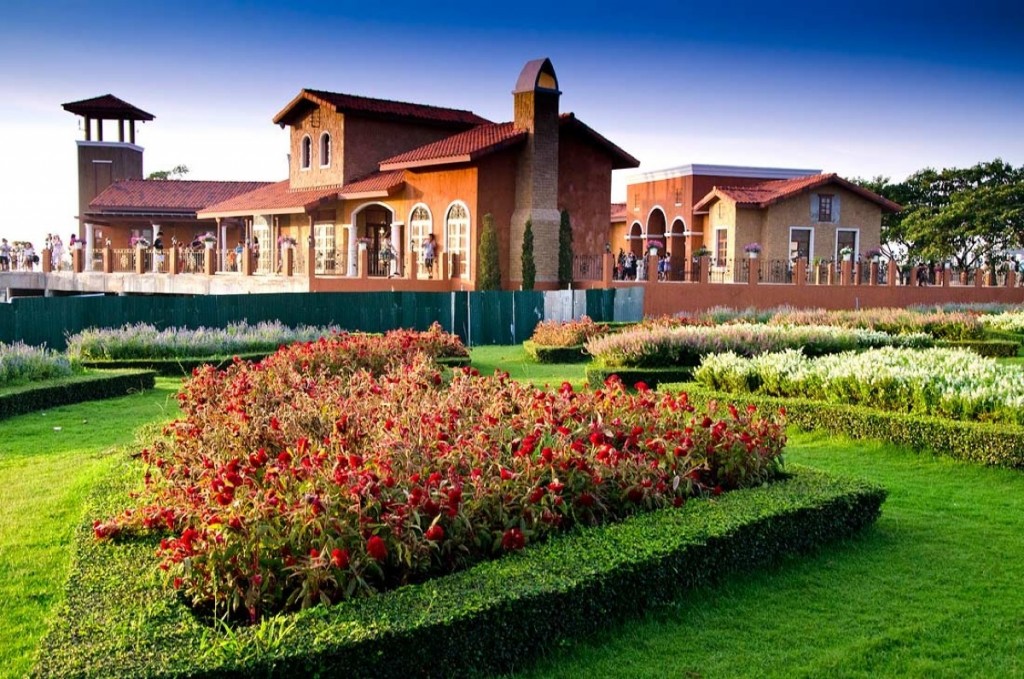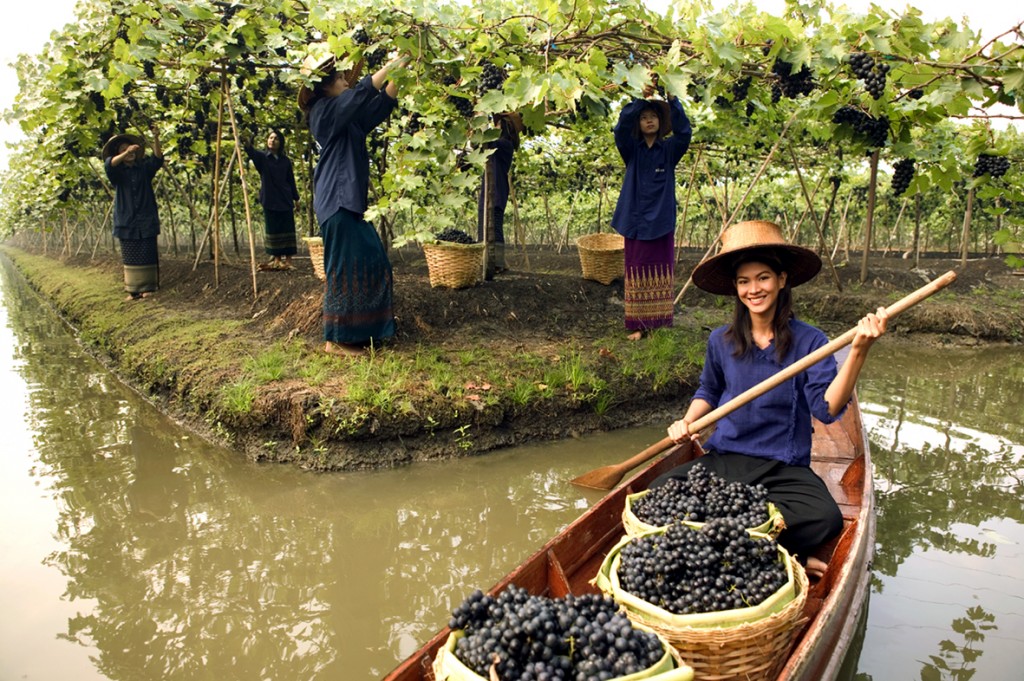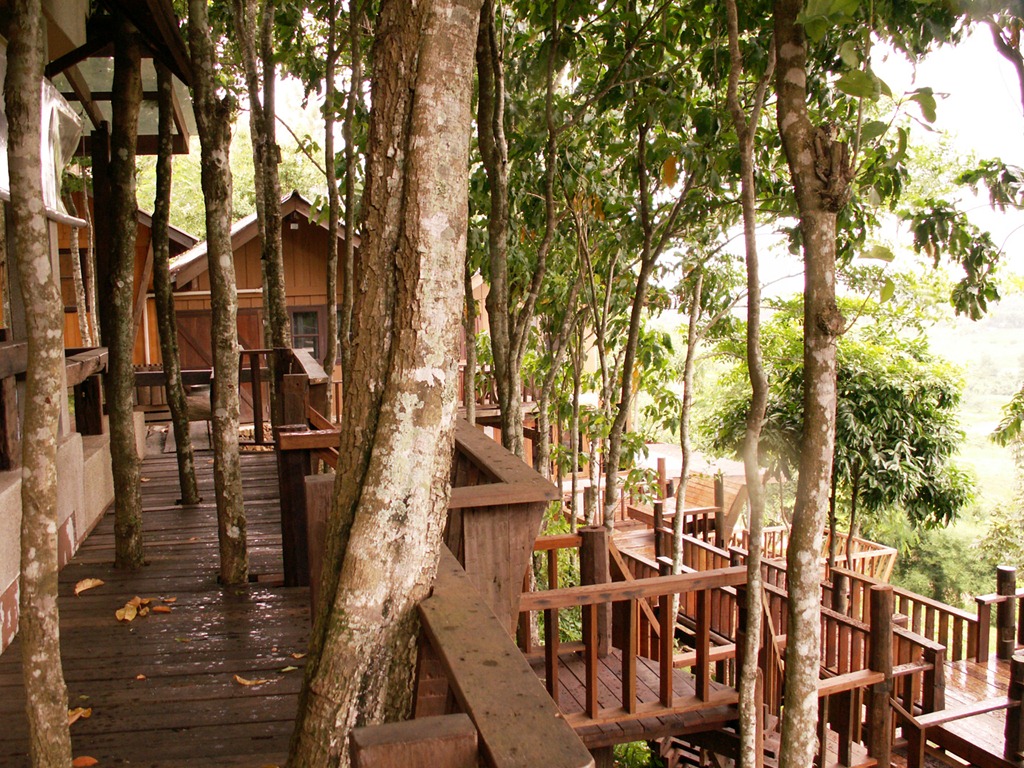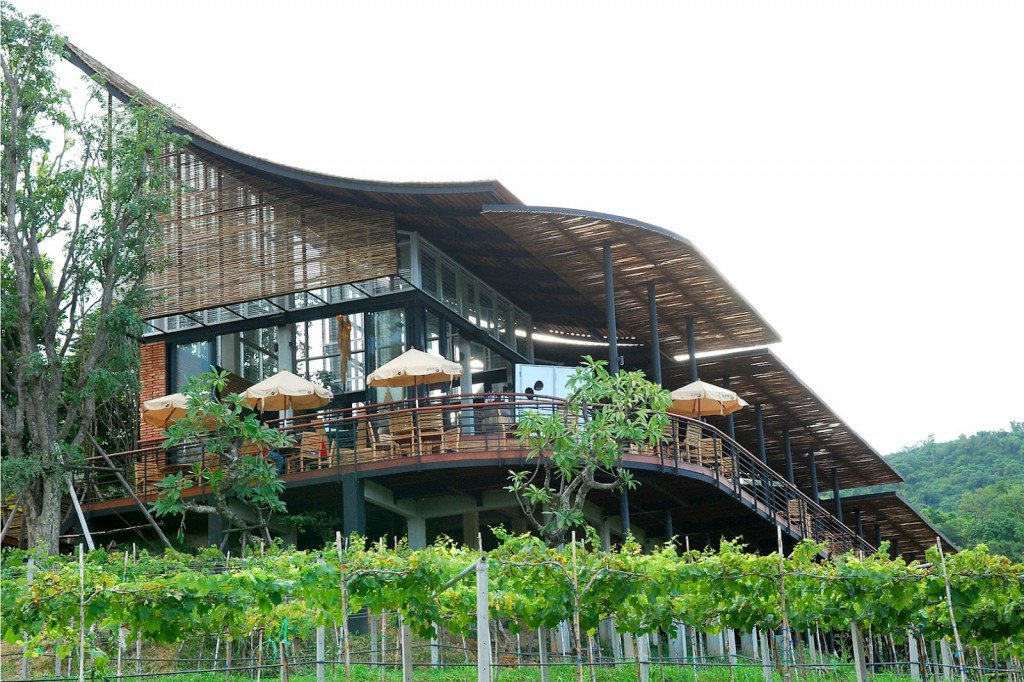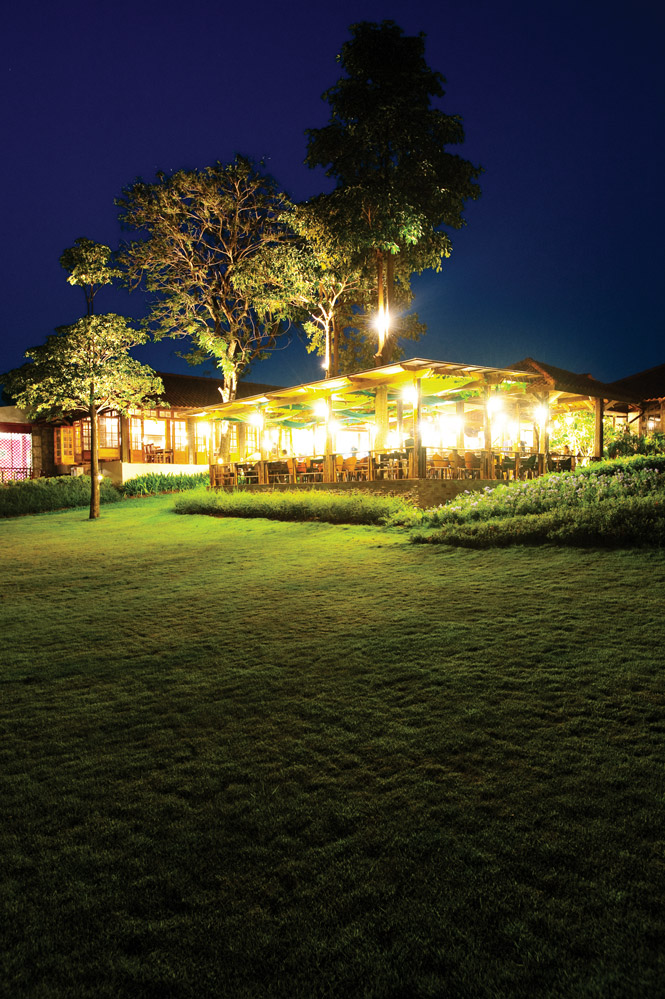Looking into the Thai wine industry and discover what obstacles that had been holding it back
Thailand’s wine industry was a mere glint in the eye of King Bhumibol Adulyadej back in the 1980s. In a sign of the times, Hua Hin, one of Thailand’s key breeding grounds for elephants, now also hosts the country’s most successful wine producer, Siam Winery.
One of the revered monarch’s many Royal Projects, grape cultivation and wine production back then was aimed at encouraging opium-growing farmers in the north to shift their cash-crop base. Three decades on, it is not rural Thais who have embraced viticulture so much, but rather a handful of entrepreneurial families motivated by prestige and profit.
One of the industry’s founding fathers is the late Chaleow Yoovidhya, who invented the recipe for, and co-founded, Red Bull, the world’s best-selling energy drink.
In 1986, his oldest son Chalerm established the Siam Winery company, which controls about 30% of the market with wine produced in the southern coastal region of Hua Hin. The majority of Thailand’s wine is produced here and in the north-eastern mountain region of Khao Yai.
The company produces around 260,000 bottles a year, ranging from simple table wines to premium bottles going for as much as $200 each. Around 65% of Siam Winery’s production is exported to Europe, the U.S. and other destinations.
“Our strategy is to market Thai wine with Thai and Asian food,” said Siam Winery’s German-born commercial director Daniel Schwalb, adding that the goal is to corner the hotel and restaurant market, leaving the supermarket and mass retail sectors to others.
According to Schwalb, Thailand has seen a marked inflow of expertise, state-of-the-art equipment and vine root stock from Europe, the Americas, Australia and New Zealand over the past 15 years.
Self-made success
In 2013, 2 million bottles — equivalent to 1.5 million liters — of wine were produced in Thailand, a quarter of which were made using Thai-grown grapes, according to the Thai Wine Association. The larger proportion, the industry body reported, was made using imported concentrates.
Grapes grown in the tropics define the so-called “new latitude” group of wine producers that are relatively close to the equator. It includes India, Indonesia, Singapore, Cambodia, Vietnam and Myanmar.
Conventional vintner wisdom held that grapes grown in areas less than 30 degrees latitude from the equator were unsuitable for wine, Schwalb explained. And the fact that most vines grown in these regions are exposed to 12 hours of sunlight a day means there is the risk of lower average yields. But his winemakers worked with a group of tropical viticulturalists to produce clones of common grape varietals that were suitable for growing under these conditions, he said.
Schwalb now feels the Thai wine industry is forging its own identity, a sentiment reflected in the slogan on Siam Winery’s website: “A few degrees more enjoyable.”
The company has won various awards for its Monsoon Valley range, made from chenin blanc, colombard and viognier grapes. Most recently, its Chenin Blanc late harvest won a gold medal and best Asian wine from Decanter Magazine. Another Thai producer, Granmonte, based in Khao Yai, won a gold medal at this year’s Sydney wine festival for its rose, made from locally grown shiraz grapes.
Not only have successive Thai governments refused to lend financial support to wine growers, but taxes on alcohol are dauntingly high and still increasing. Alcohol has long been a cherished source of tax revenue for the Thai government, with beer and spirits taxed at 40-50%. But the perception of wine as a luxury good has resulted in it now being taxed at close to 300%.
“Thailand has some of the highest taxes on wine in the world,” Schwalb said.
Thailand only recently moved away from taxing wine based on the declared customs value for imported wines or on costs of production for domestic producers. Providing welcome respite for local winemakers, the government last year began taxing wine based on specific alcohol content and wholesale prices. This move has helped to create a more level playing field, though it initially led to wide-spread rioting by importers, who had enjoyed lax scrutiny and thus had a competitive advantage over local producers.
There is still work to be done, however. With competition between new-latitude producers starting to ramp up, restrictions on advertising alcohol or even sponsoring events make it harder for the Thai wine industry to make its voice heard. Most imported brands hold a competitive advantage because they are well-established and less reliant on advertising.
“The Thai government should look at successful case studies like India,” Schwalb said.
In the coastal region of Hua Hin, where Siam produces its Monsoon range and other brands, average nighttime temperatures are 25 degrees, and there is a constant evening breeze. The soils are loamy-sand and slate. Head northeast to Khao Yai and night temperatures are closer to 10 degrees with darker, heavier soil. Wines from Khao Yai have been noted for their finer tannins, while Hua Hin’s hotter climate leads to riper fruits and more aromatic wines.
High hurdles, higher hopes
One of the industry’s key concerns is grape yields. Thailand has endured extreme weather for several years. After severe flooding in 2011, it went through two years of drought, which has taken a toll on the country’s many agricultural industries, including grape growing.
The Thai Wine Association reports that growers produced 450 tons of grapes in 2012, compared to 460 tons in 2011, despite the addition of 28 acres of cultivated land to bring the total to 400 acres. In 2010, the harvest was almost 690 tons on just 354 acres. Grape production for 2013 is expected to be down on the previous year.
At the same time, imported brands, led by Australia, France and Italy, dominate the market. According to Euromonitor, total consumption for 2012 was 14 million liters, with local products accounting for around only 15%. The research group predicts total wine consumption in Thailand will hit 25 million liters by 2017, but it remains to be seen whether Thai wine can increase its share of the market.
An often-cited reason for the Thai government’s distaste for the local wine industry is the perception of alcohol as “immoral” in the eyes of Buddhist faith. Rising consumption levels have also coincided with social problems, such as a higher divorce rate. A report last year by the Chulabhorn Research Institute cited a tripling of Thailand’s divorce rate to 33% between 2009 and 2012, during which time 61% of some 4,000 families surveyed reported at least one member had a drinking problem.
Nevertheless, Lohitnavy insists demand for Thai wine will increase, especially among tourists, while internationally he hopes the “new” factor and expanding trophy cabinet will add powerful impetus and persuade the government to join the party.
Siam’s Schwalb feels the recent military coup restored stability to Thailand, ending months of uncertainty for businesses across the board. He estimated that the prolonged protests that gripped Bangkok contributed to wine sales dipping by around 5%, though he stressed that key tourist areas like Phuket, Pattaya and Samui were largely unaffected.
“We see a big increase in consumer confidence and believe, after a short-term impact due to lower tourism arrival, Thailand will bounce back stronger.”
For Thailand’s millions of farmers, grapes may yet offer a beacon for hope for those in struggling industries such as rice growing, now under extreme pressure due to falling global prices and a failed subsidy scheme, the subject of a corruption inquiry.
But the immediate money, Lohitnavy said is in table grapes, which, with domestic demand large and still growing, can fetch seven times more than wine grapes at market.
Wine, on the other hand, will take a long time to mature into a lucrative product, but sources believe genuine government support could help to cultivate a viable industry.
Edited 20/8/2014 – To correct regarding the information we’ve got from CNN about Mr.Visooth Lohitnavy‘s comment on Thailand’s wine business – “ As past president of TWA (Thai Wine Association) from 2004-2011, I know that there is some some truth in the article but not all. But surely I don’t support using animal to do whatever kind of work in vineyard “



 0
0